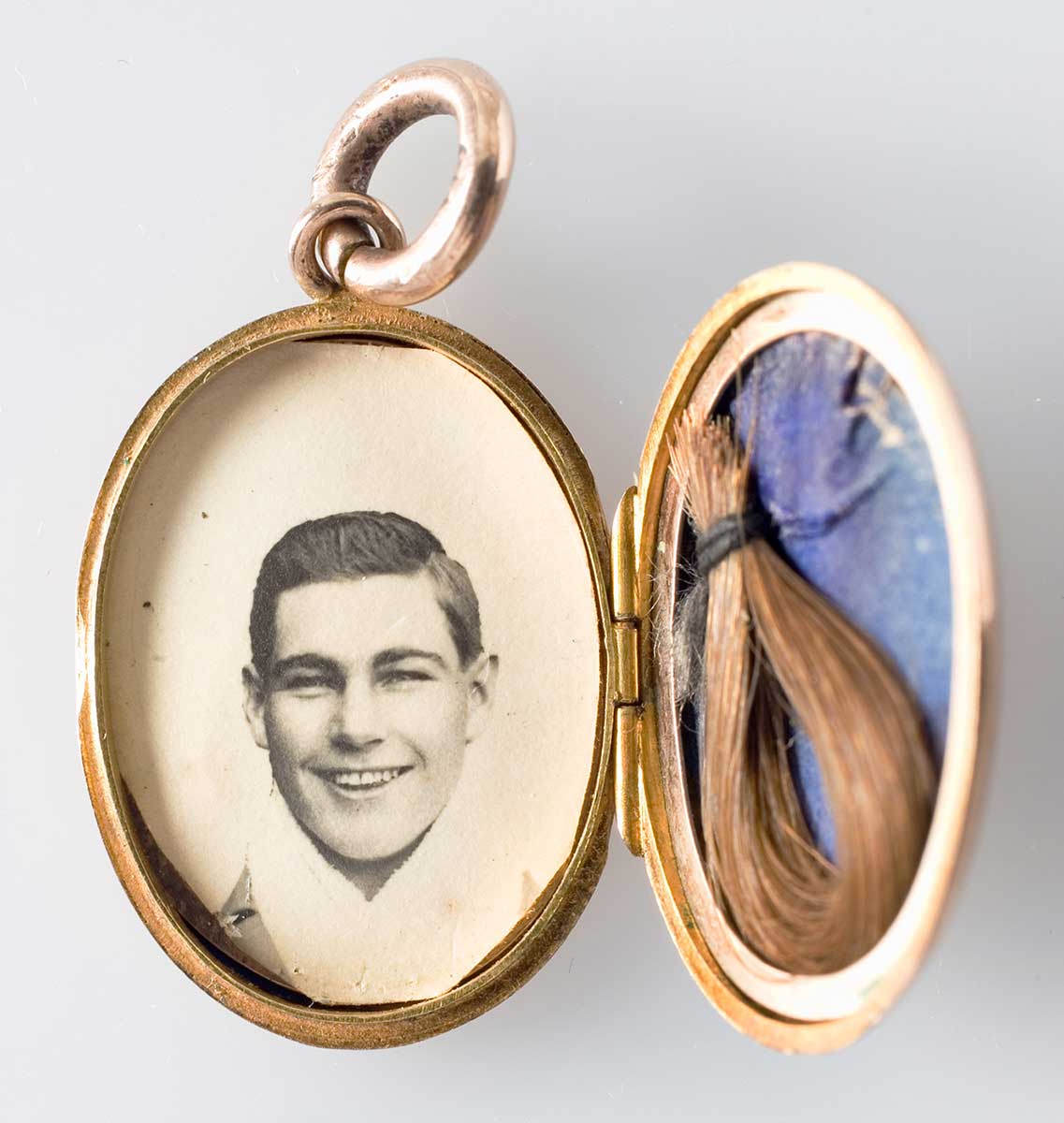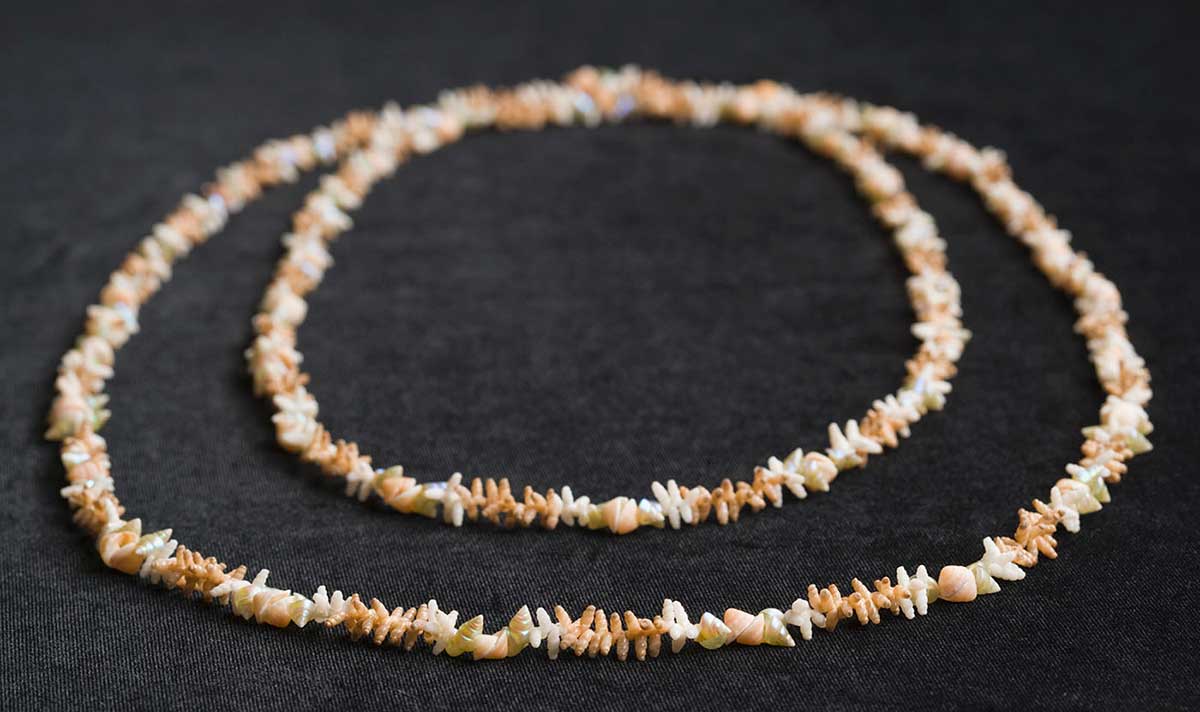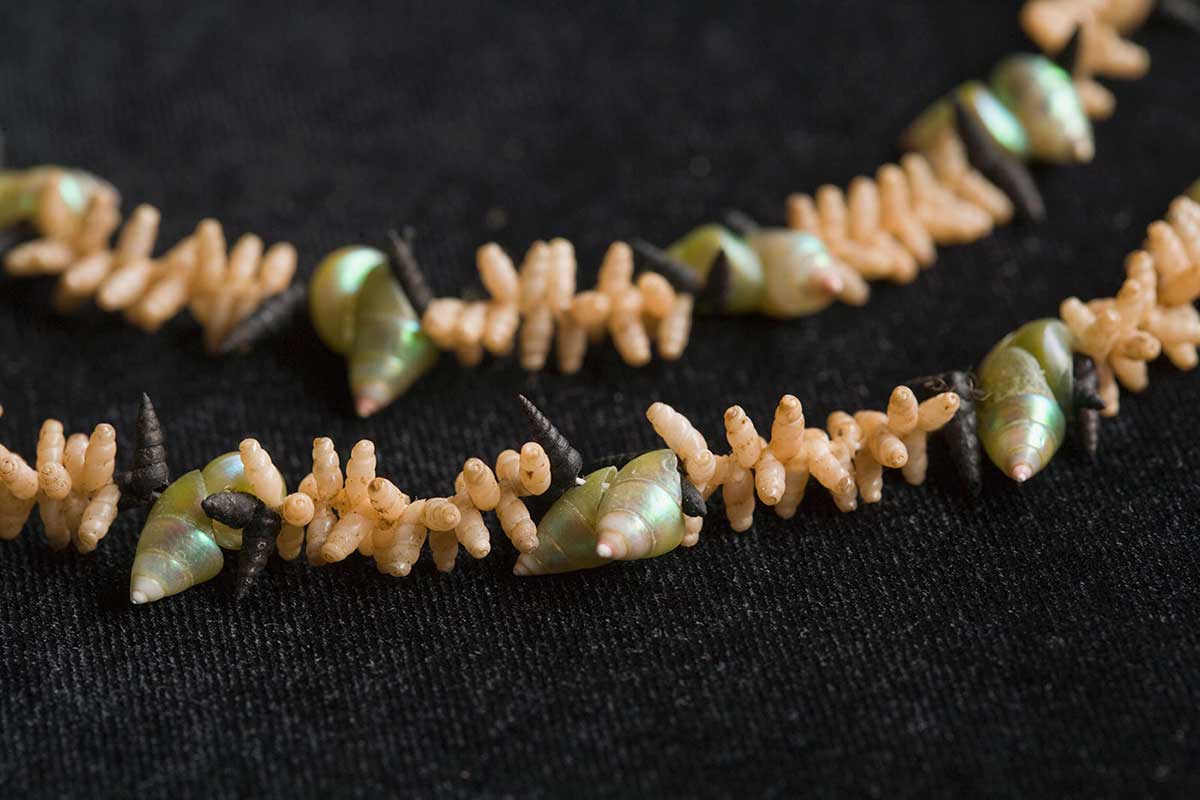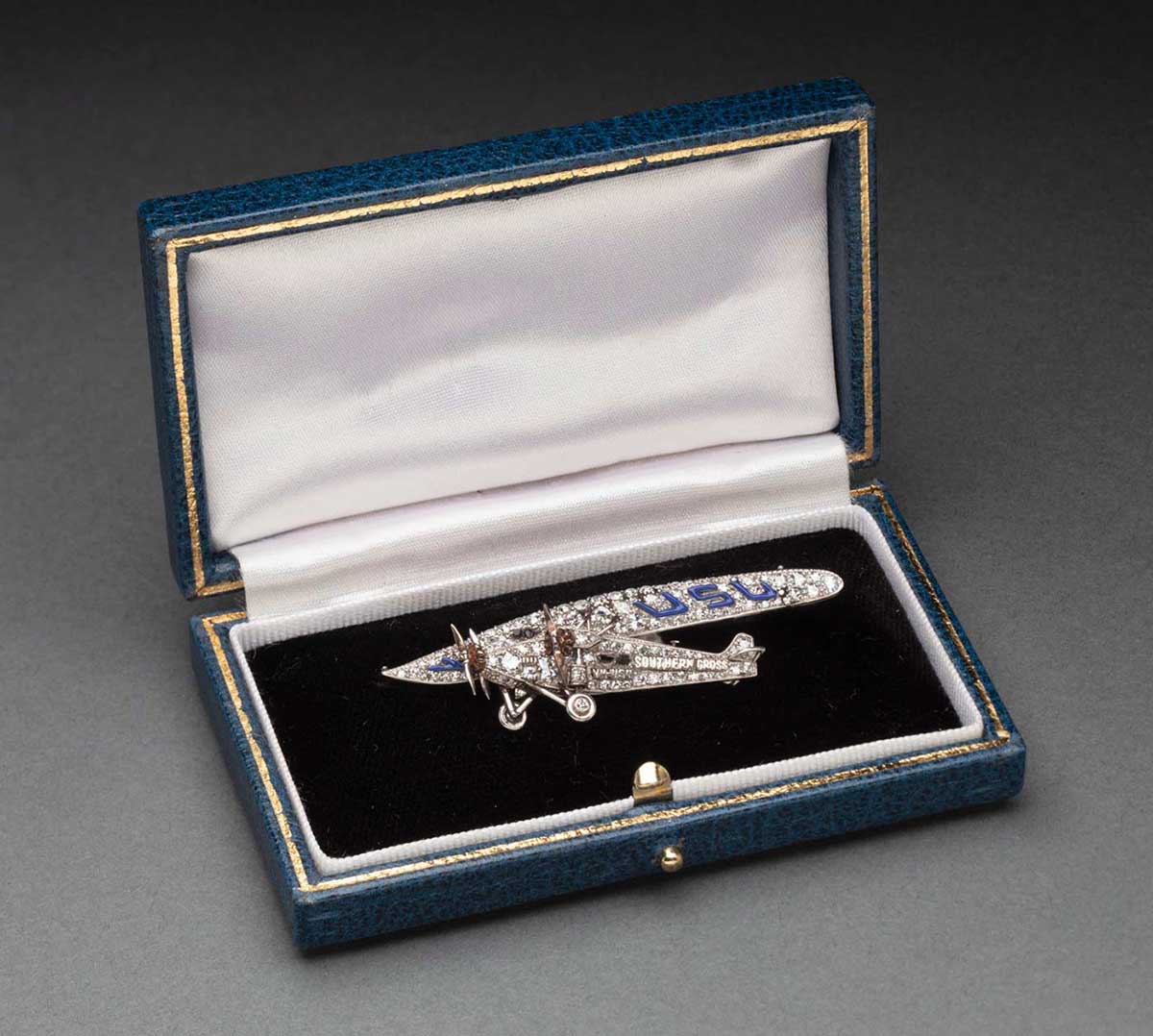The Museum has some stunning pieces of jewellery in its collection. This month we’re exploring the stories behind some of these beautiful pieces – Les Darcy’s gold mourning locket, Tasmanian Aboriginal shell necklaces and a beautiful brooch of the Southern Cross owned by Charles Kingsford Smith’s wife.
Les Darcy’s locket

Les Darcy was a middleweight Australian boxer who was born into a poor Irish Catholic family in East Maitland, near Newcastle, in 1895. His first fight was in an illegal boxing match in 1910.
From 1915 to 1916 he won 22 consecutive fights and word of his ability spread, quickly making him a national hero. It was in Sydney that Darcy met and began to court Winnie O’Sullivan.
Darcy attempted to enlist in the Australian Imperial Force to fight in the First World War, but his parents wouldn’t give their permission. So he instead decided to pursue boxing and accepted an offer to tour the US.
Darcy became gravely ill while in America due to an infection caused by dental surgery in Australia. Winnie was holidaying in California when she heard the news and rushed to his side. Darcy died of septicaemia on 24 May 1917.
This locket was found among Winnie O’Sullivan’s personal effects following her death in 1974. It contains a lock of Darcy’s hair and is an intensely personal and private memento.
Tasmanian Aboriginal shell necklaces
Two shell necklaces made by Aunty Dulcie Greeno make up the Dulcie Greeno collection. They are examples of one of the most significant cultural traditions practiced by Tasmanian Aboriginal women.
One of the necklaces in the collection is made from a strand of pearly green maireener (rainbow kelp) shells, brown rice shells and black cats’ teeth shells. The other is a strand of pearly blue-green maireeners, brown and white rice shells, and pink button shells.
Necklace-making is one of the few traditions that has continued and evolved in Tasmania since European settlement. The knowledge and skills of shell processing and stringing has been passed down through generations of Tasmanian Aboriginal women.
Charles Kingsford Smith Southern Cross
This diamond and sapphire brooch depicts Sir Charles Kingsford Smith’s aircraft, the Southern Cross. Kingsford Smith had the brooch made in Amsterdam for his wife Mary.
His son Charles remembers his father smuggling the brooch into Australia in January 1932. To avoid taxes and duties, Kingsford Smith apparently concealed the brooch beneath the fabric body of his aircraft.
Another researcher believes the brooch was made earlier, in 1930, as a gift for Kingsford Smith’s new bride.
The brooch is currently on display as a part of The Trevor Kennedy Collection: Highlights.
We’ll keep bringing objects, collections, exhibitions and programs from the vault as part of the Museum from Home experience. Stay tuned!
In our collection



